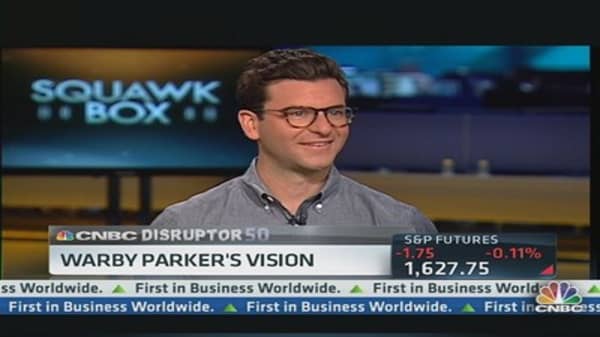What
Warby Parker was conceived to disrupt the overpriced eyewear market controlled by a few large companies that reap huge profits due to lack of customer choice. Using the web as a way to limit costs and engage directly with customers, the company offers stylish prescription eyewear at a fraction of the existing price (starting at $95).
Disrupting
The eyeglass market. It's on the verge of doing the impossible—breaking a monopoly. And now that they've figured out glasses, can't they apply that to other categories?















